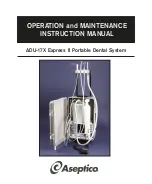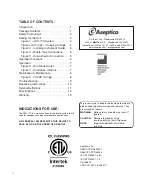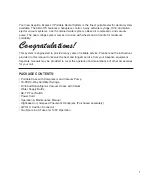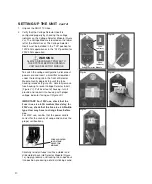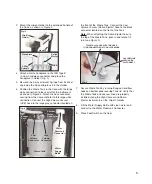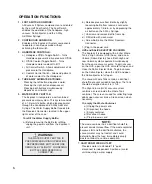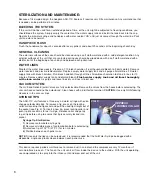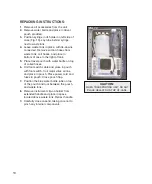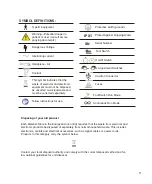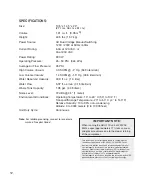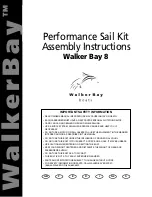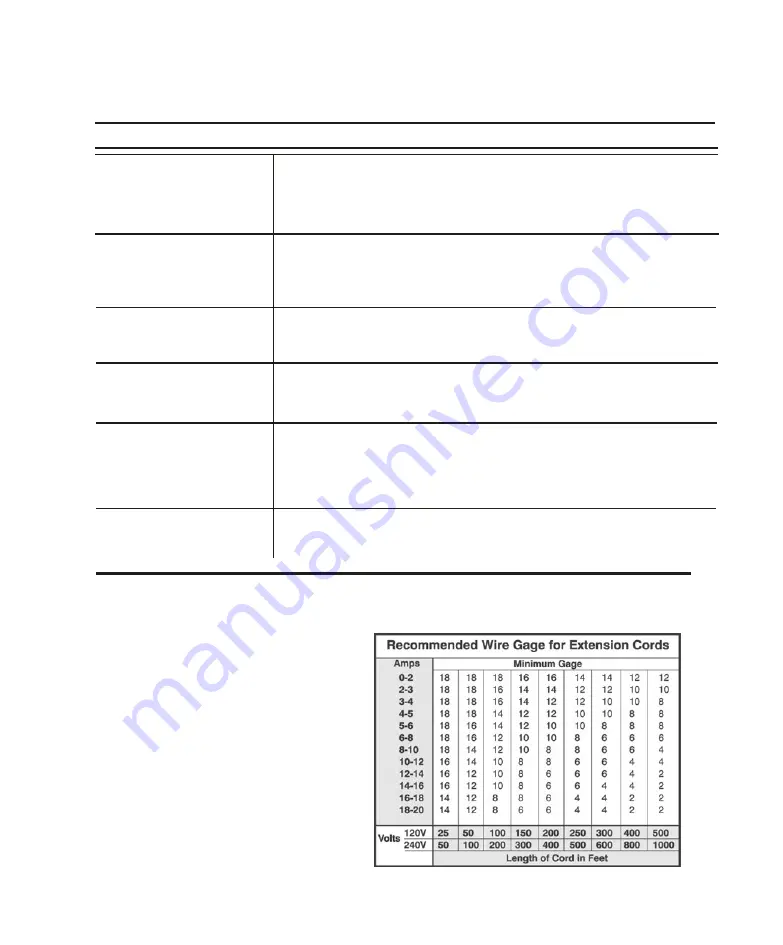
9.
Problem:
Unit will not start
Unit starts but blows fuse
No water coming out
Insufficient vacuum
Insufficient handpiece operation
Compressor makes a chugging
sound and does not start up
properly
Correction:
Check system’s power connection.
Turn Run Mode Switch to “Continuous” or “Foot Switch” Mode and begin operation.
Check that voltage selector module is set for source voltage.
Check fuse. If blown, replace with 6.3A/125V medium time delay fuse for 120V
operation, or a 4A/250V slo-blo fuse for 230V operation.
Check that voltage selector module is set for source voltage.
Check vacuum waste container. If full, immediately empty to continue operation.
Check vacuum hose assembly for blockage.
Check that fuse is correct for source voltage.
Check water supply tank for water level and verify that cap is tight.
Depress foot switch for 5+ sec. to pressurize supply tank.
Ensure the handpiece air control valve is not opened all the way.
Check vacuum waste container. If full, immediately empty to continue operation.
Check vacuum hose assembly for blockage.
Check that waste container lid is properly seated and tightly secured.
Check that handpiece ON/OFF toggle is “ON”.
Check that handpiece coolant ON/OFF toggle is “ON”.
Check that air control valve is turned up adequately
Check that handpiece tubing is untangled and not crimped.
Check handpiece connection for missing gasket.
Check for sufficient power source and avoid long light-grade extension cords
(Refer to Figure 8 Extension Cord Recommendations - below)
TROUBLESHOOTING:
EXTENSION CORD RECOMMENDATIONS:
Use only a 3-wire extension cord that has
a 3-blade grounding plug. Connect
extension cord plug to a matching 3-slot
receptacle. Ensure that the extension
cord is in good condition and that its gage
wire is the correct size wire to carry the
current this product will draw. An
undersized cord is a potential fire hazard
and will cause a drop in line voltage,
resulting in loss of power and causing the
product to overheat. Figure 9 indicates
the correct size cord for the length
required and the ampere rating listed on
the product nameplate.
If in doubt, use
the next heavier gage cord. The
smaller the gage number, the heavier
the wire gage.
FIG. 9

